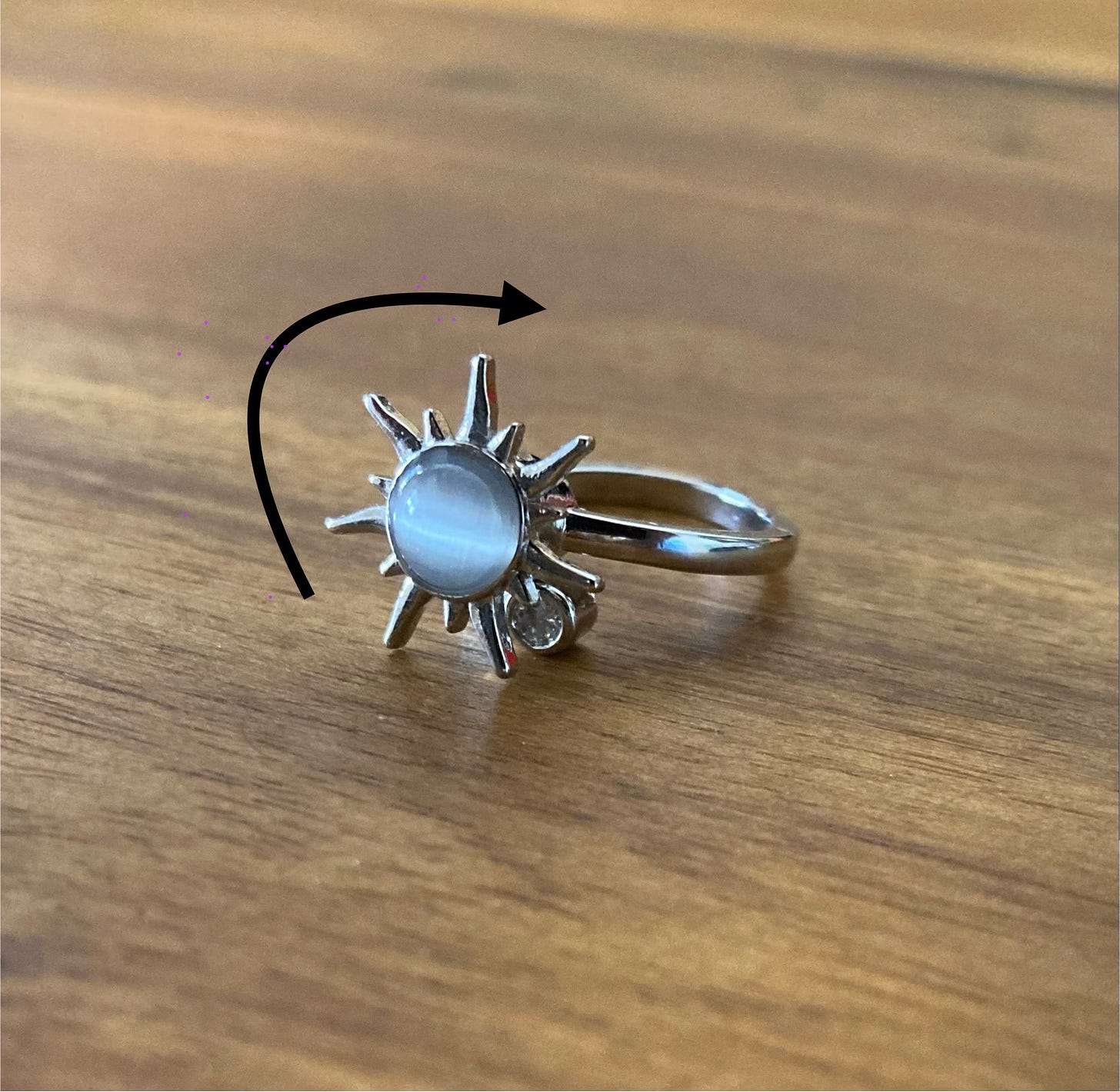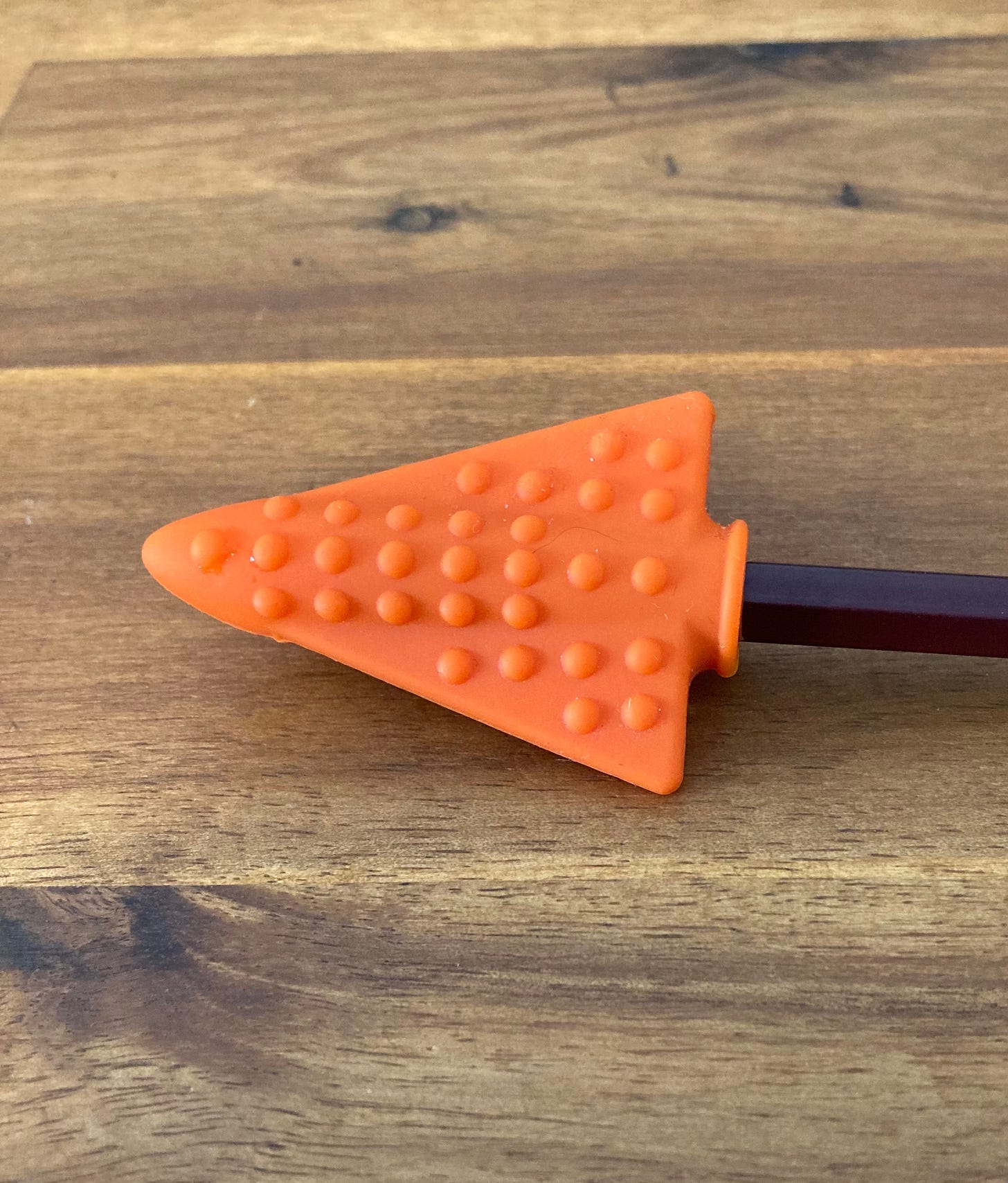Sensory Kits
Sensory Kits are helpful for anyone with sensory sensitivities. This guide will walk you through creating an effective Sensory Kit.
Many neurodivergent people are particularly sensitive to sensory input. These sensory sensitivities can sometimes bring deep joy and appreciation for various aspects of the sensory environment that others might not notice or perceive, but they can also bring discomfort, pain, and anxiety.[1]
It’s helpful to be aware of how the environment impacts our family members or ourselves.
Luke,* an adult ADHDer, told me that he experiences discomfort from:
bright lights, especially the sun. Too many noises at once (if more than one person is talking, I find it difficult to understand anything). Either very high pitch or low noises. Certain smells. Restrictive clothing (I hate wearing a tie or wearing long sleeves)”
He also finds certain things soothing,
I like to move stuff with my hands (I have dozens of fidget toys on my work desk). Vibrant, pastel colours. Being able to get up and move around. Familiar music.
Sensory Kits are collections of tools that empower a person to take control of uncomfortable or troubling sensory inputs in their surroundings. These tools can help dull some stimuli, sooth anxiety, enable focus, and give comfort.[2] The kits will differ for every person, and they can become a familiar, safe resource to bring into new or difficult situations. I’ll help you create one below! (See also my article on Invisible Sensory Kits, for when you don’t have this kit with you).
As we make these kits in collaboration with our children, we are reminding them that when they feel strong feelings or discomfort, it helps to identify the source, address the problem, and find effective ways to calm down. This is an important life skill! Many adults haven’t learned this, and so they turn to distractions like scrolling social media, binge watching shows, or indulging in unhealthy food to sooth themselves temporarily. By reflecting with our children on their responses to their surroundings and creating Sensory Kits with them, we’re helping them to be self-aware, thoughtful, and empowered people who know how to effectively manage stress, pain, or anxiety.
Design your own Sensory Kit
To create a kit, work with your child to identify sensory triggers and think about how to either dull or distract from those sensations. Then, consider what brings comfort and incorporate those elements.[4] Below are a few ideas and suggestions, you and your child will no doubt alter and extend beyond these.
Sight
Bright, fluorescent, or flashing lights can be overwhelming. Reflected light, bright white tiles, or the movement of dappled shadows may also cause discomfort. Some people also find certain colours or textures nauseating.
Ideas for your kit:
· Sunglasses or tinted glasses
· Calming visual distractions (e.g., a fidget spinner, or a photo of a pet)
· Paint sample cards with soothing colours
Sound
Loud, sudden, deep, high-pitched, or constant sounds can be distressing for some.
Sally*, a 10-year-old autistic girl tells me:
I don’t like people chewing. Sometimes I can’t sit with my friends at lunch because they eat so annoyingly. I feel guilty because I don’t want to make them feel bad, but I have to leave because I can’t help getting frustrated and crying.
Ideas for your kit:
· Earplugs[5] or noise-cancelling earmuffs
· Earphones with calming music or white noise
· An item that clicks (such as a pen or toy) to hold near the ear so they can concentrate on the sound that is within their control.
Smell
Strong or unpleasant smells can cause discomfort, distraction, or nausea.
Ideas for your kit:
· A water bottle (engaging taste buds can dull the sense of smell momentarily)
· Chewy mints or gum to create a different smell and taste
· Scented wristbands or lip gloss with a familiar scent
Touch
Certain fabrics, clothing tags, socks, seams, and carpets are just some things that can be highly irritating for some.
Ideas for your kit:
· Hair ties or clips to keep hair off the skin
· A small tube of hand cream to apply to itches (though for some, cream is an unpleasant texture!)
· A soft toy or squeeze ball to provide positive tactile input to counter the discomfort.
Many neurodivergent people use tactile input when the environment becomes too much. Actions that don’t cause injury, like flapping, spinning, or tiptoeing, can be effective self-soothing actions that are clever calming responses to the environment.
However, some actions cause damage to themselves (or others), sometimes drawing blood or leaving injury. Perhaps they pick their skin, repeatedly hit their head hard, pull out hair, pick their lips, or gnaw on their hands. If these actions cause injury, it might be best to gently replace them. The child may be seeking to create a sensation within their control that is even stronger than other uncomfortable sensations around them or stronger than their anxiety within. For example, you might notice they bite their lips when there is loud traffic, or they pull their hair out after a long day.
Ideas for your kit:
· Pressure rings or wristbands (see the photo) for strong sensations that don’t cause damage
· Chewable necklaces or rubber pencil toppers (see the photo) for those who find chewing soothing
· Drink bottles with straws for those who find sucking soothing (fill with ice-cold water for extra sensation)

Focus attention
Many neurodivergent people find it difficult to focus their attention on a single thing (such as the teacher), their attention may be pulled in multiple directions, or they may be overwhelmed by all the sensory input. Rachel*, an ADHDer, described it as:
My brain is a radio, and I just can’t tune into the station I want. I can hear the sermon through the crackling static, but other stations burst through and block me from hearing clearly enough to understand.
If the brain or the environment is busy, fidget tools can provide a point of focus and a sense of order and calm. Contrary to what has been taught for so long, keeping hands busy can actually help the mind to focus.[6]
Ideas for your kit:
· Small fidget items: modelling clay, tactile putty, squishy ball, or a soft toy
· A small model car with spinning wheels, a fidget spinner, or a spinning ring (see the photo)
· Quiet activities like colouring, crochet, or a Rubik's cube

Quick prayer
This is a great opportunity to remind your child that we can pray to God any time! Perhaps they could have a verse in their Sensory Kit to remind them to pray. For example,
Cast all your anxiety on him because he cares for you. — 1 Peter 5:7
When your child reaches for something in their kit, they can tell God how they feel, ask him for comfort, and thank him for the certain, eternal and glorious comfort we have in Christ.
What else?
These are just a few ideas to get started. Consider what additional items might be helpful, such as,
· A timer to visually track activity duration
· A watch with toilet alarms in case body signals are drowned by overwhelm
· A snack for when hunger strikes
Collaborate with your child to determine what they need most. Sensory Kits are a powerful way to support self-regulation, providing comfort and stability in a sometimes overwhelming world.
To read more, check out my articles on sensory sensitivities here and my article on energy management here.
FOOTNOTES
*Names have been changed
[1] Many neurodivergent people have a mix of sensory-avoiding and sensory-seeking behaviours. RJ Grant, L Barboa, J Luck, E Obrey, The Complete Guide to Becoming an Autism Friendly Professional : Working with Individuals, Groups, and Organizations, Taylor & Francis Group, Routledge, 2021, pp. 104-107
[2] I would hope schools, churches, and other communities work with families in partnership to create environments that are less painful, it should not be just up to individuals to make all the adjustments.
[3] This kit includes earplugs and earmuffs to muffle sound; chewy mints to both cover other strong smells and to engage the mouth (chewing or sucking can be very relaxing and help focus the mind); a pressure ring to give a strong grounding, calming, or distracting sensation; a spinning ring to engage the hands and help focus the mind; a soft toy to squeeze or stroke for comfort; a table spinner to engage the eyes if the room is crowded or stimulating; a watch to keep track of the schedule and to have reminders to use the bathroom and drink water; and two quiet activities to engage the mind if anxiety mounts or there is unstructured time (which can be disconcerting for some).
[4] To assess any given environment, the Webster framework can be a useful guideline but should be adapted according to categories that are impactful for the individual neurodivergent child, A A Webster, B Saggers, S Carrington, ‘Inclusive Teaching for Students on the Autism Spectrum’, in S Carrington, B Saggers, K Harper-Hill, M. Whelan (Eds.), Supporting Students on the Autism Spectrum in Inclusive Schools: A Practical Guide to Implementing Evidence-Based Approaches, Routledge, 2021, pp. 47-57
[5] These can come in a range of strengths. Flare Calmer Kids have soft earplugs that flatten soundwaves somewhat and block just 10dB of sound. Loops earplugs have a range of strengths, they come with several sizes to adjust to the ears, these are also useful for sleeping in. Curvd have a range of strengths and also come with multiple sizes. Quies wax plugs can be shaped to fit the ear, which takes some practice, but ends up giving the highest dB rating, though they need replacing often. We’ve found that many cheaper brands hurt delicate ears fairly quickly, so these are the brands we prefer. (I’m not sponsored by any.)
[6] This recent study found that fidgeting can help people with ADHD to manage their attention and stay engaged. HM Son, CA Calub, B Fan, JF Dixon, S Rezaei, J Borden, JB Schweitzer, X Liu, ‘A quantitative analysis of fidgeting in ADHD and its relation to performance and sustained attention on a cognitive task,’ Front Psychiatry, 2024 Jul 1;15:1394096. doi: 10.3389/fpsyt.2024.1394096.







This is such an incredibly creative, intuitive, and wise collection of comfort for those who need an extra helping of calmness. Thank you, friend ...